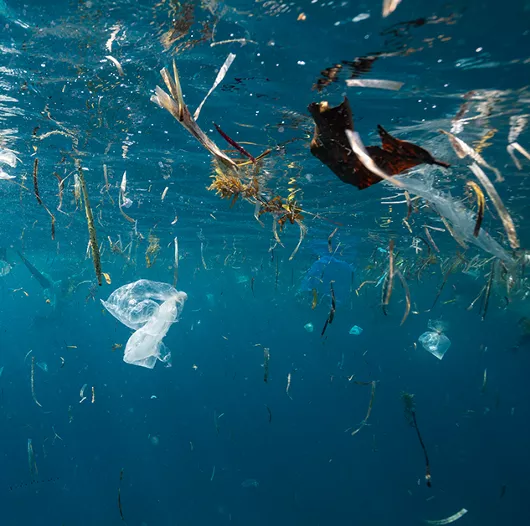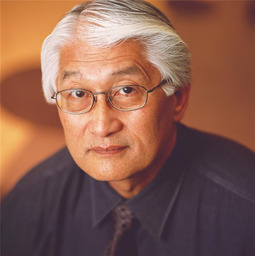The Role of Data and IoT in the Struggle for Clean Water


When you consider that of the 70 percent of water that covers the planet only 2.5 percent of it is fresh, and only one percent of that is accessible, it’s impossible to talk about sustainability efforts without discussing their potential impact on everything from the consumption of water to its use in the production of food and energy.
That’s mainly because the one percent of available fresh water is rapidly declining as the consumption and use of freshwater swells. In addition, water supplies are increasingly stressed by climate change. Global warming is causing record-breaking droughts, affecting enormously populated areas like California, currently enduring a series of years-long droughts, where underground aquafers are being depleted. And according to modeling by NASA, there is a high likelihood of megadroughts in the 21st century which could span multiple decades.
A great deal of fresh water is also continually being lost to aging infrastructures. Thirty percent of the water in older cities, like Istanbul, for example, is lost due to leaks in its water grid. In addition, contamination of water supplies plagues many regions. Flint Michigan’s problem of lead contamination was well publicized several years ago.
And today, 2.2 billion people lack access to safely managed drinking water, while more than 4.2 billion people lack safely managed sanitation. Fecal contamination is also a major problem in many countries where sewage and animal waste leaches or flows into lakes and rivers and other drainage facilities. The United Nations estimates that 80% of wastewater flows into water ways without treatment.
Not to be forgotten, there are also an increasing number of chemical contaminants, including microplastics, which make water unsafe for consumption. Even some of the chemicals used to destroy bacteria have also been found be detrimental to long term health. As a result, new monitoring and reporting requirements are being put into place much like Europe’s General Data Protection Regulation (GDPR) for business. The U.S.’s Environmental Protection Agency (EPA), for example, now requires that a water utility’s annual water quality report (also called a consumer confidence report), which is usually posted online, disclose if contaminants have been found in the water. If contaminants have reached dangerous levels, the water supplier is required to send customers a public notification.
This cacophony of water dread demands that we develop safe, secure, and sustainable water utilities. That requires not only high-quality facilities and systems for water purification plants and sewage treatment plants, but also general optimization based on a broad spectrum of linkages between operating technologies (OT) and information technologies (IT).
Utilities need to transform the way they manage water resources and deliver water and sanitation services to billions of people. Urgent action is needed to try and overcome this global crisis, as it affects countries around the world, socially, economically, and environmentally.
For almost a century Hitachi, Ltd., has supplied numerous products, systems and services to more than 40 countries in a wide range of fields, including water supply and sewage infrastructure, industrial water treatment, seawater desalination and water recycling.
Hitachi will contribute to achieving the goals for clean water as set forth in the United Nations’ Sustainable Development Goals (SDGs) of 2015, with a focus on IoT. In this respect, Hitachi has been providing reliable, innovative, and safety-first water environment solutions, systems and services for water and sewage service providers. In particular, Hitachi has a considerable track record of delivering monitor control systems that form the core of water and sewage systems, with installations reaching about 2,100.
O&M Support Digital Solution, a cloud-based service for water and sewage services that uses IoT, represents the systemization of this extensive effort and experience. This solution makes use of Lumada, Hitachi’s unique solutions for accelerating digital innovation. In this system, various water/sewage facility data, including operational information, work records, and equipment failure and repair information, is gathered in the cloud using IoT. There, digital technologies such as AI, analytics, and Augmented Reality (AR), are used to support the visualization, labor-saving, and streamlining of operational and maintenance work, and also the passing on of know-how and expertise.
In addition to understanding contamination levels, such monitoring of the wastewater can also be used to detect the presence of pathogens in the fecal matter.
Beginning with the city of Hakodate, initiatives using this solution are being executed for the water utilities of several other municipalities. This same solution is also delivering tremendous benefits in the water and sewage service comprehensive contracts entered into the city of Toda in Saitama Prefecture.
Another example of how Hitachi approaches this problem is demonstrated in its implementation of a desalination system in South Africa. Hitachi developed a seawater desalination system that mixes seawater with water reclaimed from the wastewater reuse process in order to dilute salt in the seawater before filtering it through the reverse-osmosis process.
This method reduces pumping costs, as the diluted seawater can be pumped through the filtering process at lower pressure using lower-cost pumps. Hitachi demonstrated a seawater desalination system capable of producing 6,250 tons of drinking water and reduced power consumption by at least 30 percent over their previous system by using medium pressure pumps with brine water (water separated in the process to treat wastewater for reuse).
An added benefit from the use of brine water was the dilution of the salinity of the discharge water which reduced the impact on the marine environment. The salinity of the discharged water was comparable to the surrounding environment.
Global water shortages continue to grow more dire as a result of population increases, urbanization, and climate change. But with intelligent monitoring, AI-based data analysis and data-driven strategies, we can slowly begin to improve the sanitation, availability, and access to fresh water for all.
Be sure to check out Insights for perspectives on the data-driven world.
Related
Hu Yoshida spent 24 years at Hitachi Vantara helping define technical direction and enabling customers to address their digital transformation needs. He is widely known in the industry and was instrumental in evangelizing Hitachi's unique approach to storage virtualization.